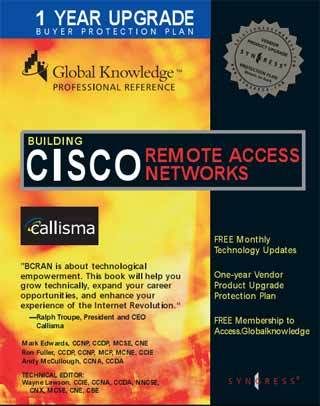
Exam-Pack: PW0-050 Entry-level wireless certification
Includes 17 Videos
If you’re in IT and haven’t learned wireless yet, it’s time. Wireless is quickly overtaking wired networking as the technology of choice for networks of all sizes. Businesses need tech pros who can install reliable wireless networks.
Wireless# training and certification will get you up to speed in wireless fundamentals, so you can install and administer basic wireless networks plus get started on the CWNP wireless certification path.
Learn how to make a wireless network work
The Wireless# (”Wireless Sharp”) Certification Package provides expert-led instruction to teach you how wireless works. Plus it prepares you for the entry-level Wireless# certification, which tells employers that you can install and manage local wireless deployments.
The lessons in the Wireless# Certification Package will teach you the fundamentals of wireless technology, how to deploy a basic wireless network, and how to make it run well. This instruction gives you a strong foundation in wireless networking. Plus, it prepares you to go much deeper into wireless, adding this exciting technology to your IT skillset.
You’ll learn these things from the Wireless# videos:
- How does wireless work, and who sets the standards for wireless networking?
- How do ZigBee, WiMax, Bluetooth, Infrared, and other wireless technologies work? What are the uses and advantages of each?
- What does it take to set up a small wireless network?
- How do I allow clients to connect to my wireless network?
- What do I need to know about security before I set up my wireless network?
- How can I optimize my wireless network for the best possible performance?
- What do I do when things aren’t working?
Why Wireless# is important for you
The Wireless# Series focuses on what it takes to set up a wireless network for small offices and homes. It’ll be especially helpful for you if you’re an IT pro in a small business, and you’d like to add wireless capabilities to your network. It’s also a great skillset if you’re an installer, technician, or salesperson who provides networking solutions for small businesses and consumers.
Even if none of this describes you, Wireless# can still be a great skillset to add to your IT toolbox, and an even better way to break into your career in wireless networking. Don’t wait another day to learn this cool technology.
Prerequisites
A basic understanding of computers such as what’s covered in the A+ Series or equivalent knowledge is recommended before viewing these videos.
The Wireless# Series contains these videos:
- Introduction to Wireless#
- Wi-Fi Organizations
- Wi-Fi Technology Characteristics
- Wi-Fi Standards
- Radio Frequency (RF) Fundamentals - Part 1
- Radio Frequency (RF) Fundamentals - Part 2
- Characteristics, Advantages, and Applications of ZigBee Technology
- Characteristics, Advantages, and Applications of WiMax Technology
- Characteristics, Advantages, and Applications of Bluetooth Technology
- Characteristics, Advantages, and Applications of Infrared Technology
- Wireless Infrastructure Devices
- Wireless Client Devices
- Introduction to Wireless Antenna Types
- Wireless LAN Security Techniques
- Optimizing Wireless Networks
- Installing and Configuring Common WLAN Applications (free video!)
- Troubleshooting WLAN’s
Download Link:
Exam-Pack: PW0-050 Entry-level wireless certification part01
Exam-Pack: PW0-050 Entry-level wireless certification part02








